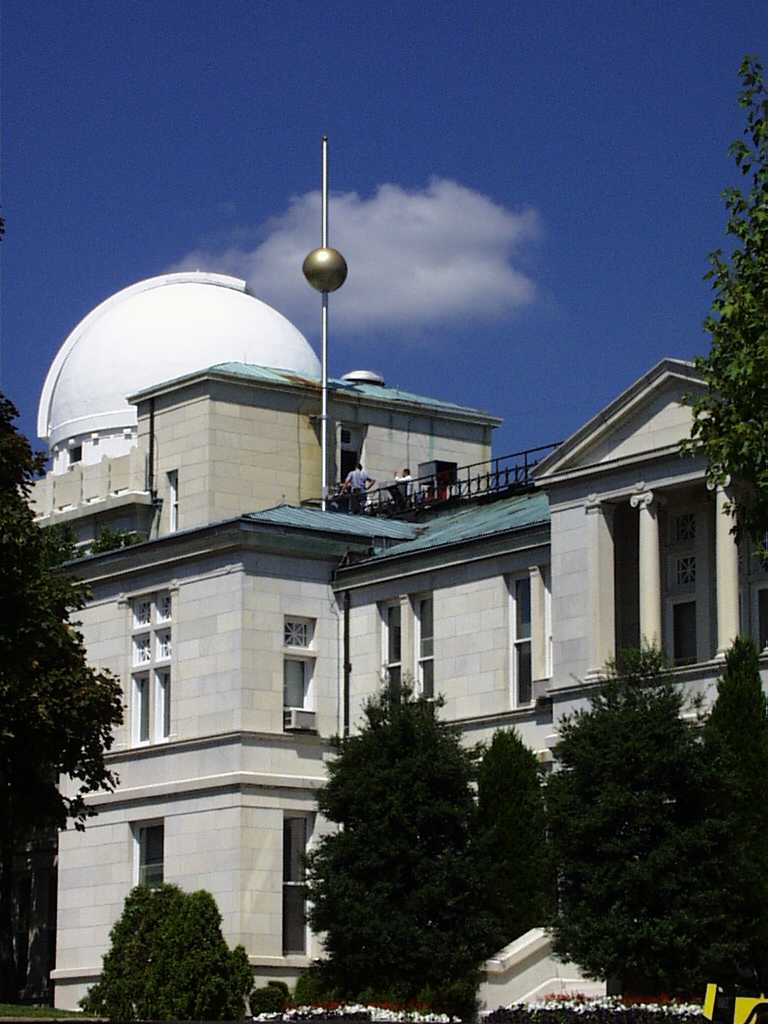Did you know the U.S. Naval Observatory in Washington, D.C. drops its own time ball every day at noon?
Pardon the lateness on this one.
According to the US Naval Oceanography portal, the USNO time ball was one of the first systems to enable the Observatory to support remote users. The ball was dropped at the astronomically determined instant of Mean Solar Noon in Washington. Back in the day, this enabled the navigators of ships anchored in the Potomac River to rate their chronometers...or in other words, synchronize their timepieces.
The USNO is one of the oldest scientific agencies in the country. Its primary mission was to care for the U.S. Navy's chronometers, charts and other navigational equipment, and was first established as the Depot of Charts and Instruments back in 1830.
Photo from Astronomy Picture of the Day. Thanks to Margot Adler's NPR story for the inspiration.
Pardon the lateness on this one.
According to the US Naval Oceanography portal, the USNO time ball was one of the first systems to enable the Observatory to support remote users. The ball was dropped at the astronomically determined instant of Mean Solar Noon in Washington. Back in the day, this enabled the navigators of ships anchored in the Potomac River to rate their chronometers...or in other words, synchronize their timepieces.
The USNO is one of the oldest scientific agencies in the country. Its primary mission was to care for the U.S. Navy's chronometers, charts and other navigational equipment, and was first established as the Depot of Charts and Instruments back in 1830.
Photo from Astronomy Picture of the Day. Thanks to Margot Adler's NPR story for the inspiration.







